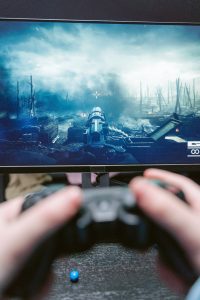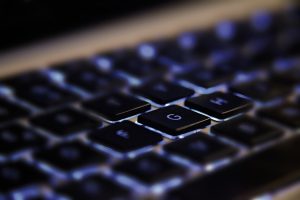
The International Space Station is teeming with life. NASA has cataloged bacteria and fungi on the ISS
There are currently six astronauts aboard the International Space Station, but they are not alone. NASA specialists have created a catalog of all the microbes and fungi found on the ISS, and it turns out that the station is teeming with life.
Microbes and fungi thrive on the International Space Station (ISS) thanks to the unique combination of microgravity, radiation and tight living space. Most of them came into orbit with the astronauts. Lack of competition from microbesoIn normally occurring on Earth favors their development.
The most comprehensive microbial inventory to dateoin found on the surfaces inside the ISS showed an astonishing roThe diversity of microbesow. Their extensive catalog was published in the journal „Microbiome”. Someore of the microorganisms discoveredow could potentially threaten the health of astronautsow, so knowing their populations can helpoc in the development of measuresoin safety, especially for planned long-duration space missions, such as a mission to Mars.
– Specific indoor microbes on Earth have been shown to affect human health. This is much more important for astronautsow during the flightoin space, because they have altered immunity and do not have access to the advanced medical therapies available on Earth. In light of possible long-term missions, it is important to identify the types of microorganismsow, whichore can accumulate in the unique, closed environments of the ISS. We need to know how long they can survive and what impact they have on human health and on the ship’s infrastructureoin space – said Dr. Kasthuri Venkateswaran of NASA’s Jet Propulsion Laboratory (JPL), cooroutor of the report.
Bacteria on Earth are found almost everywhere, and not all of them are bad. But someore of those found aboard the ISS could cause a serious threat. Amongod of those most dangerous are organisms considered opportunistic pathogens, i.e., those thatore cause infections in individualsob with reduced resistance. These are, for example, enterobacteriaceae, bacteria of the genus Bacillus or staphylococci (Staphylococcus), including Staphylococcus aureus (Staphylococcus aureus).
These bacteria on Earth are prevalent in gymnasiums, offices and hospitals, suggesting that the ISS deck is similar to other public places where the microbiome is shaped by people.
– It is not known whether these opportunistic bacteria can cause disease in astronautsow on the ISS. This would depend on a number of factorsow, including the health of each person and how these organisms function in the space environment. Regardless, the detection of organismoin pathotworicular highlights the importance of further research – said Alexandra Checinska Sielaff, a microbiologist at Washington State University et aloauthor of the study.
Probkets for analysis were collected from eight locations on the ISS, including the observation module window, toilets, exercise platforms, sleeping quarters and the dining room table. Probki were collected during three flightsow on ISS over a period of 14 months. This made it possible to find out whether and how theob Microbial populationsow and fungusoin roare changing over time.
The study authors found that although the fungal communityow were stable, are microbial communitiesow seemed to change with the changing crew of the ISS. Probacilli taken during the second flight had a higher romicrobial diversity than probki taken during the first and third flights.
Detailedolnie worrying is the fact that many microbesow detected on the ISS are known to form biofilmow – a thin, mucous layer thatora adheres to the surface. According to the authoroin, it can cause problems for astronautsow if they become infected, as biofilms promote antibiotic resistance. Moreover, biofilm formation on the ISS can reduce the stability of the infrastructure, causing mechanical blockages, reducing heat transfer efficiency and inducing microbial corrosion.
– Someore microorganisms, whichore we have identified on the ISS, are roalso involved in microbial corrosion on Earth. However, the role they play in corrosion aboard the ISS is not clear and remains to be determined. The possible impact of the microbeoin and fungusow on astronaut healthow and understanding their potential impact on spacecraft will be important for maintaining the structural stability of the vehicle itself during long-term space missions, when routine interior maintenance cannot be so easily performed – explained Dr. Kamilla Urbaniak of JPL, cooauthor of the publication.
– Our study represents the first comprehensive catalog of bacteria and fungioin located on surfaces on the ISS and can be used to improve the means ofoIn safety meeting NASA requirements for human habitation in space – Venkateswaran said.


